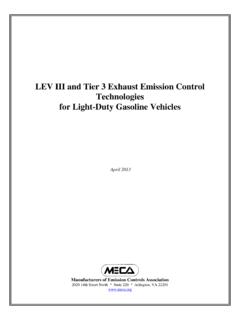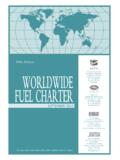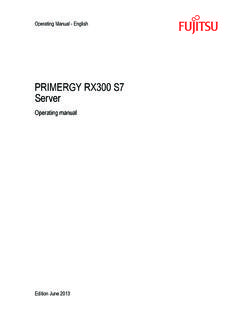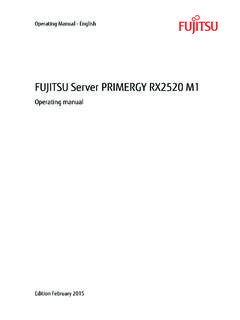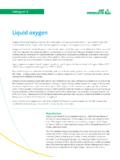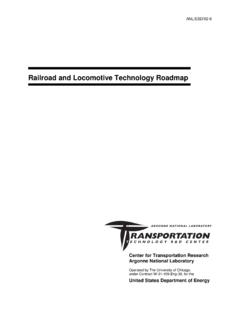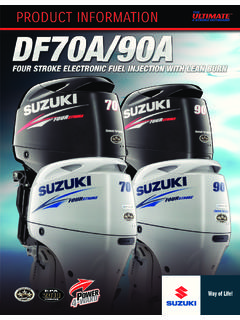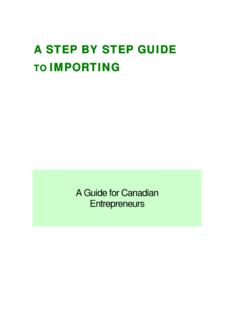Transcription of Health and Safety Executive
1 Health and Safety ExecutiveHealth and Safety ExecutiveWhole-body vibration in portsHSE information sheet1 of 4 pagesThis information sheet outlines the risk of developing back pain from whole-body vibration (WBV) when using port machinery and explains what you can do to reduce exposure to it. It should be read in conjunction with INDG242(rev1) Control back-pain risks from whole-body is whole-body vibration (WBV)?Whole-body vibration is both the vibration and shock you feel when you sit or stand on a vehicle or machine travelling over uneven ground or along uneven rails.
2 Shocks can occur, for example, when driving over subsidence, potholes or slab or rail joints. Low levels of whole-body vibration may be felt from the engines of mobile machinery or when you work near powerful machinery aboard ships, but this does not contribute to the risks discussed here. Exposure to WBV at low levels is unlikely to cause back injury, but it can aggravate existing back injuries which may prompt complaints of back pain. There are many causes of back pain other than WBV such as awkward postures and manual materials handling. It is important to reduce the risks from the most likely causes first.
3 See leaflet INDG242 for more information, and leaflets INDG1432 and INDG3833 for guidance on assessing and managing the risks from manual handling (see Further reading ). The law The Control of Vibration at Work Regulations 2005 (the Vibration Regulations)4 require you to control the risks from WBV and shock by a combination of: n identifying sources of exposure and possible exposure controls; n minimising exposure by maintaining or modifying machinery and following good practice measures to control exposure; and n training operators to ensure controls are effective.
4 HSE also recommends Health monitoring to identify workers suffering from back pain from any source, not just from WBV. What are the action and limit values?The Vibration Regulations require risks from vibration to be minimised. They set an exposure action value (EAV) which is the amount of daily exposure to WBV above which you are required to take specific actions to reduce risk, as well as an exposure limit value (ELV) that should not be exceeded. They also require control of exposures in operators of port machinery are generally around the EAV and so require management (see Groups 1 and 2 in Table 1).
5 In some cases there is a risk that needs careful management (see Group 3 in Table 1). Shocks experienced on terminal and ro-ro internal movement vehicles are higher than on other port plant. The risk of back pain in ports appears higher than expected compared with vibration exposure in other industries, possibly because drivers are exposed to WBV at the same time as other causes of back pain. You should not usually need to measure WBV exposures to know where and how the Regulations apply. However, action to manage workplace exposure to WBV is required for most mobile machinery used in ports.
6 What action should I take?The action you need to take varies with the degree of risk. Table 1 identifies common machinery and indicates into which WBV risk management group they will normally fall when following good practice suited to, for example, vessel and load types and dockyard surface quality. You may also need to address the risk of back pain from awkward you operate machinery or perform tasks not listed in Table 1 you may find information from manufacturers, your trade association, or elsewhere to identify what level of control action is required.
7 Exposures should be reduced so far as is reasonably practicable. You may wish to get advice from a person who has the qualifications, knowledge and expertise to help you decide what you need to do. Controlling the risk from WBVTake precautionary measuresn Make someone responsible for managing Ensure good communication between those responsible for managing WBV and those responsible for managing other causes of back pain. n Find out where shocks occur and what can be done to minimise them, such as adequate maintenance of rail Find out what can reduce vibration, such as limiting speed or good maintenance of machinery suspensions and roadways.
8 N Consider vibration information when purchasing or hiring machinery. n Consult your employees and their representatives on the causes of shocks and vibration and practical Provide information and training for operators on how to minimise exposure to WBV and shock and how to recognise and report symptoms. Select suitable machineryPort management should ensure that machinery:n is suitable for the intended task; n is properly maintained in accordance with the manufacturer s recommendations; n will not cause unnecessary vibration exposure; andn will not require awkward postures to be adopted.
9 Manufacturers/suppliers have duties to: n supply machinery with low vibration emissions; n inform buyers of the WBV emission level; and 2 of 4 pagesHealth and Safety ExecutiveTable 1 Port machinery grouped according to likely exposureGroup 1: WBV alone is unlikely to cause back pain*Group 2: Risk of back pain from WBV alone is lowGroup 3: WBV is a likely cause of back painGroup 4: You must restrict duration of exposure to WBVR ubber-tyred gantry cranesRail-mounted gantry cranes Quayside cranes** Steel-handling fork-lift trucksStraddle carriers** Reach stackers** Empty container handlers Top lifts Industrial trucks Front loaders/shovels Internal movement vehicles (IMVs)
10 Terminal and ro-ro Pallet trucks** It is unusual for tasks in port activities to fall into this category * Although vibration exposures are very low, it is advisable to control vibration exposures in ports because WBV and poor posture (or other causes of back pain) together are likely to increase the risk of back pain.** Examples of these machine types are known to cause much higher vibration exposures than indicated here. Avoid unnecessary WBV when choosing, maintaining, and specifying operating procedures for these types of machinery.** High vibration and shocks have been measured on the footplate of this type of machine but the likelihood of WBV causing back pain is probably lower than measured exposures indicate because the operator is standing.










